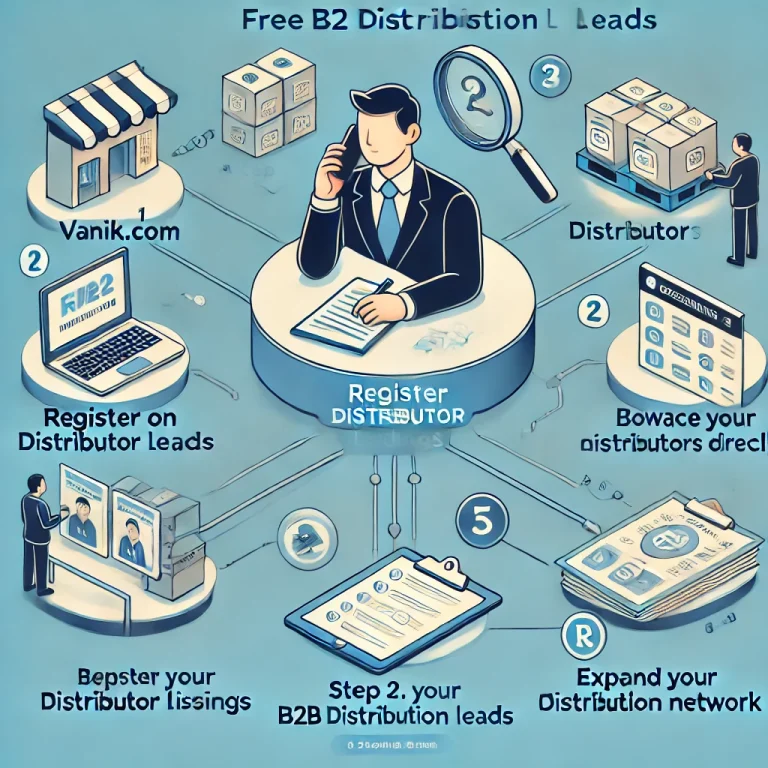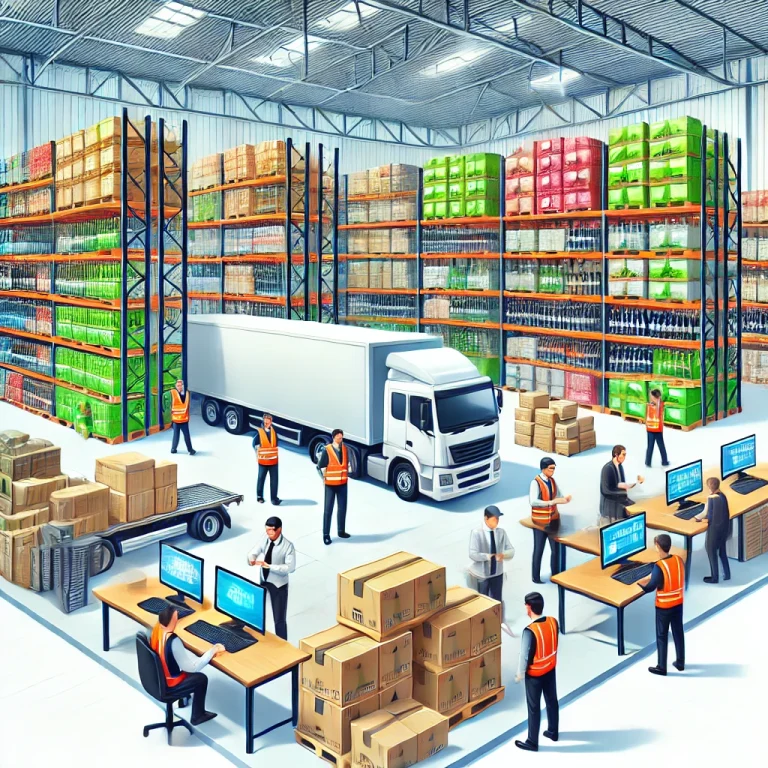Indian distribution trade is in the brink of a massive upsurge. Major barriers against inter-state distribution like Octroi, state tax, sundry state specific restrictions, road permits, CST, VAT etc. are mostly gone with introduction of GST – opening up a vast Pan India market. Now is the time for every business engaged in manufacturing or importing to expand sales channels through network of dealers and distributors across India.
This is absolutely essential for any business, for – without growing sales your business has no future.
More sales means more customers. How do you get more and more customers ? Obviously, your existing market – your town, locality, district or city – has a saturation level. You need to look out for greener pastures – new markets for healthy sales growth.
If your product is selling good in local market – there’s no reason why it shouldn’t sell in other cities / states or even in overseas markets. Intermediaries like wholesalers and distributors can help you grow your sales manifold at zero cost and risk. However, how do you find reliable distributors, dealers, wholesalers etc. across India ?
Fortunately for you – Vanik.com takes care of this problem. By joining Vanik.com – you will find huge number of distribution partners – duly verified by Vanik Research Team – at your finger tips. Does that solve your problem ? Well – greatly, but still you need to work out a strategy for best use of Vanik advantage. Here are a few issues for you to ponder and decide a path that best suits your requirement.
7 Essential Steps For Building Successful Distribution Channels
- Entry Strategy : Think Global Act Local Pan India distribution channel is a laudable objective – we all must strive to achieve that. However, you need to start with one state. So, which state you should focus first ? The most sensible starting point is your own home state. Put your best foot forward – start with a market you know well. Explore the hidden potentials in markets around you – even if you have some distributors already appointed there. Use vanik’s geographic search engine – check distributors listed in your city / district / state. Start talking to to them. Remember, every time you appoint a distributor – expanding supply chain to cover that distributor is your responsibility. What better place to expand logistics support to new distributors than your own state ? Once you have fully covered home state – start adjoining states, one by one.
- Market First – Product Next All markets are not equal – some promises more potential than others. If a product is positioned at higher end – obviously its target will be upmarket. Someone selling special vegetable bags for refrigerators need to address urban areas more than rural one (it actually happens with one of our customers, we found rural households suffer more from power cuts in that state). So, based on your market research – select target markets and search for distribution partners within that market. vanik allows location based search – district-by-district or state-by-state.
There’s a second reason. Distributors chose products based on mainly 2 criteria – 1) Demand / Salability in downstream retail market; and 2) margin. They do not care much for product category unless there’s special reason. So, do not rule out any distribution partner simply because of his/her present product line - Distributor Is Not Your Customer Several manufacturers – specially new entrants in distribution business – make this cardinal mistake of treating distributors as another customer. Hell, No ! Distributor is not your customer, he/she is part of your extended family. You need to nurture distributors, hand-hold him/her during initial days, build relationship. Remember, successful distributor is a win-win situation – for, distributor’s success is your success.
- Fair Distribution Agreement Strike a balance between your interests and that of distributor’s in legal agreement. Do not make it tilted on one side – for that’s outright unhealthy for long term relationship. So, if manufacturer is demanding security deposit – distributor can demand credit. Recognize other guy’s insecurity, interests – make the agreement unbiased, fair. This is more so for smaller businesses who tend to suffer most when a successful distributor leaves and join competitor’s bandwagon
- Distributor Needs Marketing Support A product sells on the strength of marketing. Big companies build brand equity through advertisement, promotion etc. and distributors take advantage of that brand equity to sell to retailers. However, what happens for a small business who can not afford to pay for big ticket brand promotion ? Well, there’s a way out. Visit any small grocery shop and you will find significant number of little-known or even unknown brands. Along with branded products from well known companies – one can see these not-so-known brands. How these little-known brands are selling ? Obviously, they do sell otherwise retailers will not allow them to occupy shelf space. Some amount of local marketing / selling must be behind such brands. For successful selling of your product – be prepared to offer marketing support to distributors. Manufacturers may either appoint sales staff or pay distributors extra for cost of local marketing
- Supply Chain Strategy As distribution network spreads – cost of transportation/logistics increases. To cut down additional supply chain expenses, you need to aggregate operation and appoint more intermediaries in terms of super-stockists and C&F Agents. Though, its not of immediate concern for manufacturers just joined distribution operation – keep this in mind while appointing distributors. More your distributors are in a contagious area – easier it will be to manage them in future. So, select your target markets keeping future supply chain operation in mind
- Dealer, Distributor, Wholesaler Or A Mix – Which Model Suits You? Distribution channel consists of several independent businesses which align themselves with manufacturing company or importer to distribute its products from the source to ultimate customer. Depending on purpose, the alignment could be in several ways. Manufacturer/importer needs to decide which model suits his/her purpose best.
In wholesaler model, wholesalers buy products from manufacturers/importers and sell them to downstream retailers. In this model manufacturers have little control over ultimate consumers or market segments. Its like black box – sell and forget. The manufacturers enjoy deep reach and regular cash flow but loses contact with consumers. In contrast, under the distributor model, the distributor acts as an extension of the manufacturer and operates exclusively within a specified territory. Dealership is a cross between wholesalers and retailers – sort of high end retailers directly operating under manufacturer. There are still other models that involve various stockists and substockists. All these intermediaries can add significant complexities – especially when they wear two hats at once, as they often do. A distributor selling to retailers in one territory, for example, might have a retail presence of its own in the same or a different territory.
Every model requires manufacturers to make a trade off between their degree of control, cost, margin and reach. Manufacturers have to find a balanced mix of approaches that serves a market best. Successful companies often adopt different models for different markets.


